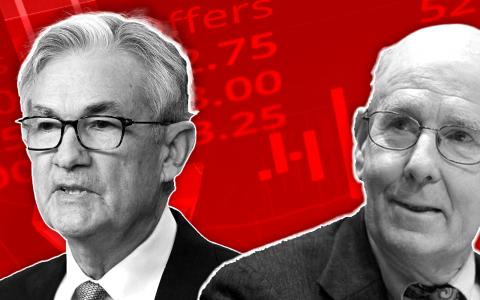
Your clients look to you for leadership on the market. But asset managers with the actual insight it takes to beat the benchmark are extremely scarce this year. We're stepping in to fill the gap and help weary advisors.
Our upcoming Model Portfolio Summit (October 18, register HERE) will gather over a dozen market strategists who aren't afraid to back up their opinions.
Some represent mega-billion-dollar giants like BlackRock and Invesco. Others are boutique managers and a few are outright mavericks with no responsibility beyond their vision of the truth.
Between them, I think we'll get something like a real consensus. But there will still be contrarian voices . . . and maybe they're the ones who have been hiding out in cash waiting to call the bottom and then the all clear.
The list of names and distinguished careers is honestly too long to list here. Consult the registration page for the current lineup.
And we still have space to add a few, so if you're a manager with opinions and a real differentiated solution set, you know where to reach us.
The problem is that a lot of managers don't have strong opinions or a unique take on the market. I know. I read all the research I can and most is useless and redundant.
It's useless because it looks backward. Many managers have fallen into the trap of providing beautiful reviews of what's happened in the market, dissecting recent developments with a surgeon's precision.
But the past is dead. And if the conclusions of all this analysis don't refine and improve the investment models, there's no real science here. What we need to know is that the models have predictive power . . . and that means talking about the future.
I know, no advisor can have a crystal ball. But to manage money, you need a framework for creating and evaluating scenarios. Cause and effect are important.
If earnings move in a certain direction, stocks should follow. If the Fed pivots, the efficient frontier needs to change. Otherwise, you're just reporting what the market did.
That's not leadership. That's following. And part of leadership is sticking your neck out and risking being wrong in public. When you're wrong, you need to tell people why your models were off and how you're adjusting them to lower the odds of it happening again.
This is a great time for active management. All you need to do is get out of the index funds' way. Again, if that's you, I want to talk to you.
And if you've promised a differentiated experience but your correlations lined up uncannily with the index funds, I have bad news. Investors can tell.
The Russell is beating the S&P 500. This is a time for discovery, deep research, high conviction, new ideas. But to get your clients on board after a miserable nine months . . . the worst start for stocks since 2008, the worst 60-40 portfolio returns since the 1930s . . . you need conviction and confidence of your own.
I know it's miserable out there. Gary Shilling will tell us just how bad it's likely to get. We need our clients to be ready for the worst case scenarios.
And then everyone else will lay out solutions. They'll say what they really feel. In a market overloaded with meaningless chatter designed to keep the clicks coming, that's rare.
And it's precious to find even one whose logic resonates with your gut experience. If you can understand and endorse their reasoning, it's a whole lot easier to communicate it to your clients and build it into their investments.
Better strategists also support better outcomes. They know what's going on. They pick the right sectors and asset classes to exploit opportunities while shunning the obvious weak spots.
They generate alpha. In a good year, that's not necessarily essential . . . everybody is happy when all boats are rising and you can usually demonstrate value on the planning side.
But in a bad year, modern clients don't live in a void. They can see when you aren't beating the benchmark despite all your best efforts.
It enrages them when they're paying you for what amounts to a random walk to the downside. If they wanted that, they could buy their own index funds from the nearest robo.
Everyone we've engaged to speak beat the benchmark YTD the last time we ran the numbers. Granted, that usually means a more conservative drawdown, but there are several who have actually made money because they had their eyes open to market and macro shifts.
Even the worst of them managed to obey the first law of investing: don't lose money, or if you're going to take a loss, lose less. That's how you keep client faith alive while you look for something that's actually working.
Most of the people at the upcoming summit have survived multiple bear markets and come back smiling.
That means they know how bad it gets. And they know how long it takes for the market to recover . . . how long you need to keep pleading with your clients to "stay the course."
Not a lot is working. We all need fresh ideas. Our clients deserve fresh ideas.
How long will it take them to recover lost ground in a conventional "low risk" allocation when that strategy has already cost them 15-20% this year?
A lot of investors have been convinced that they could only count on 3-5% a year in perpetuity. It's going to take a long time at that return rate to earn their way back . . . especially if they're taking RMDs or otherwise spending down the accounts along the way.
A lot of them are angry. That's why we're opening up to new ideas. You'll hear all about them yourself if you make it to the summit.
Registration is HERE.



